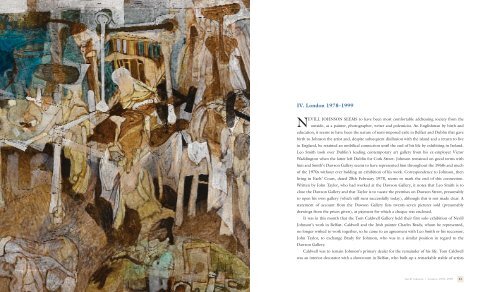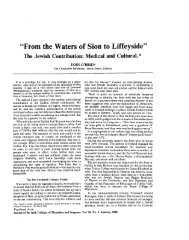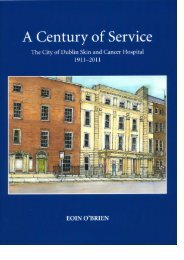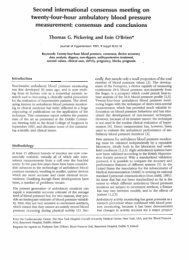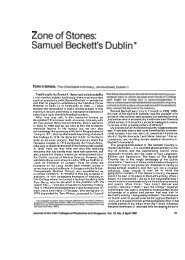Nevill Johnson: Paint the smell of grass - Eoin O'Brien
Nevill Johnson: Paint the smell of grass - Eoin O'Brien
Nevill Johnson: Paint the smell of grass - Eoin O'Brien
You also want an ePaper? Increase the reach of your titles
YUMPU automatically turns print PDFs into web optimized ePapers that Google loves.
Cottage, Ticknock (detail)<br />
80 <strong>Nevill</strong> <strong>Johnson</strong> l <strong>Paint</strong> <strong>the</strong> Smell <strong>of</strong> Grass<br />
IV. London 1978–1999<br />
NEVILL JOHNSON SEEMS to have been most comfortable addressing society from <strong>the</strong><br />
outside, as a painter, photographer, writer and polemicist. An Englishman by birth and<br />
education, it seems to have been <strong>the</strong> nature <strong>of</strong> semi-imposed exile in Belfast and Dublin that gave<br />
birth to <strong>Johnson</strong> <strong>the</strong> artist and, despite subsequent disillusion with <strong>the</strong> island and a return to live<br />
in England, he retained an umbilical connection until <strong>the</strong> end <strong>of</strong> his life by exhibiting in Ireland.<br />
Leo Smith took over Dublin’s leading contemporary art gallery from his ex-employer Victor<br />
Waddington when <strong>the</strong> latter left Dublin for Cork Street. <strong>Johnson</strong> remained on good terms with<br />
him and Smith’s Dawson Gallery seems to have represented him throughout <strong>the</strong> 1960s and much<br />
<strong>of</strong> <strong>the</strong> 1970s without ever holding an exhibition <strong>of</strong> his work. Correspondence to <strong>Johnson</strong>, <strong>the</strong>n<br />
living in Earls’ Court, dated 28th February 1978, seems to mark <strong>the</strong> end <strong>of</strong> this connection.<br />
Written by John Taylor, who had worked at <strong>the</strong> Dawson Gallery, it notes that Leo Smith is to<br />
close <strong>the</strong> Dawson Gallery and that Taylor is to vacate <strong>the</strong> premises on Dawson Street, presumably<br />
to open his own gallery (which still runs successfully today), although this is not made clear. A<br />
statement <strong>of</strong> account from <strong>the</strong> Dawson Gallery lists twenty-seven pictures sold (presumably<br />
drawings from <strong>the</strong> prices given), as payment for which a cheque was enclosed.<br />
It was in this month that <strong>the</strong> Tom Caldwell Gallery held <strong>the</strong>ir first solo exhibition <strong>of</strong> <strong>Nevill</strong><br />
<strong>Johnson</strong>’s work in Belfast. Caldwell and <strong>the</strong> Irish painter Charles Brady, whom he represented,<br />
no longer wished to work toge<strong>the</strong>r, so he came to an agreement with Leo Smith or his successor,<br />
John Taylor, to exchange Brady for <strong>Johnson</strong>, who was in a similar position in regard to <strong>the</strong><br />
Dawson Gallery.<br />
Caldwell was to remain <strong>Johnson</strong>’s primary dealer for <strong>the</strong> remainder <strong>of</strong> his life. Tom Caldwell<br />
was an interior decorator with a showroom in Belfast, who built up a remarkable stable <strong>of</strong> artists<br />
<strong>Nevill</strong> <strong>Johnson</strong> l London 1978–1999 81


